Many years ago, I decided to learn how to formally cook. The first course they teach newcomers is Knife Skills. Knife Skills is pretty much what it sounds like. They show you the time-tested ways to cut every single protein and vegetable for the greatest efficiency and effectiveness. This took only two hours because there was only one way to do each task—only one way, say, to optimally dice an onion.
 Trying any other way is futile, and will leave you with a butchered onion. The same holds true for Branding Strategy: some agencies keep trying—and failing—to create “new” branding strategy models when history has already ruled on the best way to do it.
Trying any other way is futile, and will leave you with a butchered onion. The same holds true for Branding Strategy: some agencies keep trying—and failing—to create “new” branding strategy models when history has already ruled on the best way to do it.
Brand essence. Spike attributes. Brand character. Brand voice. Brand impact. Brand magnetism. Brand aspiration. Brand truth. Brand ladder. Brand pyramid. Brand values. Brand tectonics. Go to any agency or any branding company, and they have their own nomenclature for branding strategy. In the best cases, the terms given to components of one agency’s brand identity strategy are really just a re-naming of the time-tested and proven model. In the worst cases, some agencies use a handful of the above terms in the same strategic model, throwing into question the simple definition of what a brand needs to do in any situation to stay true to itself.
Here’s a graphic from an advertisement I ran while I was Chief Branding Officer for inVentiv Health. Sorry about the poor resolution. The different boxes read things like: Objective Goals, Strategic Goals, Field Goals, Brand Scaffolding, Brand Aroma, Brand Mood, Brand Hang-ups, Brand Potential, Market Position, Missionary Position and so on.
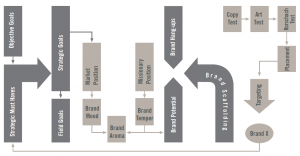
Too many brand strategy maps resemble the convoluted process of how a bill becomes a law in our Congress. Distance yourself from the visual and you can see the word “Huh?” It shouldn’t be as complicated as a Rube Goldberg contraption.
If you don’t recall Rube Goldberg’s unnecessarily complex machines, they involved a series of pulleys and levers and balls and mechanics to achieve a goal that was patently obvious, and achievable in one small step. Below, you can see such a process for how to pop a balloon.

Why do healthcare clients mistakenly accept an over-engineered brand identity strategy, instead of the simple, elegant two-part model proven over decades? My guess is that it’s in their nature. That is, they are highly rational people who work in a field where the very products they sell are rigorously tested in multiple trials with diverse populations to make sure that they haven’t overlooked anything that could go wrong. When the focus is trying to prevent something from going wrong rather than focusing on trying to get things right, the inevitable result is an over-engineered model. They simply don’t trust simplicity.
A branding strategy has only two components:
- Brand Promise: the commitment a brand makes to customers
- Brand Personality: the tone and attitude with which the promise gets delivered
How do I—and many other experts—know that only two elements are needed? Because with these two elements—and these two elements only—every aspect of a brand identity can be produced in any venue. Other strategic “components” are gratuitous—tools without a purpose.
Let’s take a well-known consumer brand: Charmin toilet tissue. The brand identity strategy is as follows:
- Brand Promise: Comfort: Charmin makes going to the bathroom as comfortable an experience as possible
- Brand Personality: Friendly, Reassuring, Caring, and Lovable
Look how this simple strategic model informs the logo…
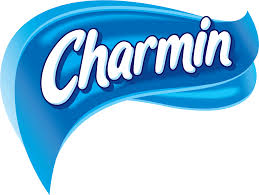 (Comfy balloon type and swooshes;
(Comfy balloon type and swooshes;
and reassuring blues)
…the packaging
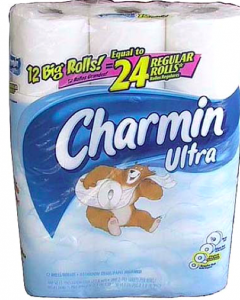 (Friendly, lovable mascot; pillow-like packaging)
(Friendly, lovable mascot; pillow-like packaging)
…and even an event. Several years ago, New York City’s Mayor Bloomberg converted Times Square into a pedestrian-only zone. Millions of tourists (and also native citizens) could roam the square and freely take in the experience. One problem: there are no public restrooms in Times Square. Suddenly, having to go to the bathroom in a neighborhood with three hundred thousand other people became an embarrassing, frustrating and (here’s the word) uncomfortable reality as needy relief-seekers confronted angry shopkeepers by trying to use their restrooms without purchasing anything. What would Charmin do? According to its brand identity strategy, Charmin would “make going to the bathroom as comfortable an experience as possible;” and would do it in a way that was “Friendly, Reassuring, Caring, and Lovable.”
So for the height of the holiday season in November and December, Charmin opened a pop-up store in Times Square called the Charmin Rest Rooms: two dozen clean (Reassuring, Friendly), free (Caring) private restrooms open to the public. Here’s what they looked like:


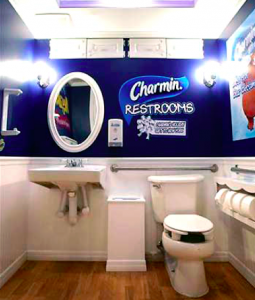
People signed in, took selfies with the cuddly bear mascot (Friendly, Lovable), and most importantly, had a comfortable restroom experience in the most unlikely geography in the city. During the two months, 428,000 people visited the facilities from every U.S. state and 110 countries. The event generated over 400,000 media impressions in the first 10 days.
The reason I chose Charmin is to point out that even with a commodity product like toilet tissue, an effective branding strategy can create true differentiation that is ownable and relevant to all audiences. Also, I start giggling when contemplating what a “Brand Essence” would be for toilet tissue.
Like a knife, a brand identity strategy model is not an end, but rather a means to an end. It is a tool used by many key brand stakeholders—those who are responsible for delivering tactics or initiatives on the part of the brand: designers, writers, art directors, photographers and the marketing personnel who develop tactics for the brand, such as a web site, advertising and sponsorships, and even events, as illustrated above in the Charmin example. Therefore, the model must be sharp (simple and to the point), and versatile (so it can create any identity for any type of brand). Simplicity and versatility are the only two qualities the model needs to have because that’s how people are going to use it to bring the brand experience to life visually, verbally and behaviorally. Yet I am continually flustered to see agencies and clients fuss over their models to the point where it becomes an unwieldy tool incapable of doing its job.
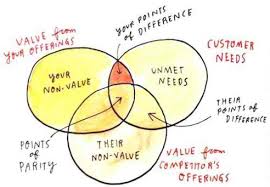
The next time you confront a situation for your brand, ask yourself, What would my brand do?” If your branding strategy doesn’t immediately offer guidance, then chances are that it is an over-engineered and ineffective model. A brand needs to make a promise to its customers, and to make it with its own unique personality. It’s that simple. Don’t try to dice the onion any other way. It’s a waste of time and money…and a good onion!

Thank you for this timely post — I have forwarded it to cllients in an attempt to prove, yet again, the value of simplicity. I recently attended a “Disruption” workshop at one of the leading consumer agencies (if you are a sentient being, you have seen their work and use their clients) — which began with a slide of 3 shapes, each associated with one word. 9 hours later, their brand truth was revealed… each “word” was a name for a process that would bring joy to any football coach;s heart. Including filling our Brand Attic. Words like vision, mission, promise, reason for being, and temperament were thrown about with wild abandon. Each of them could have used their own Brand Promise workshop. And in the end… Control and Confidence. I left their offices and bough a bag of chestnuts in tribute to the day, and the outcomes…..
Sad to hear, but all too common. And I know the agency. They published a whole book on their process! I’m waiting for the movie. I believe that J.J Abrams is directing the trilogy. Keep fighting the good fight.
I love the Charmin Times Square idea. Love the people who created it and even more the Client who accepted their creativity.